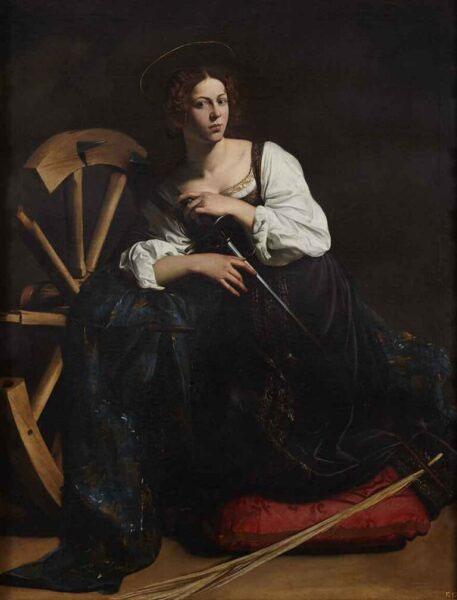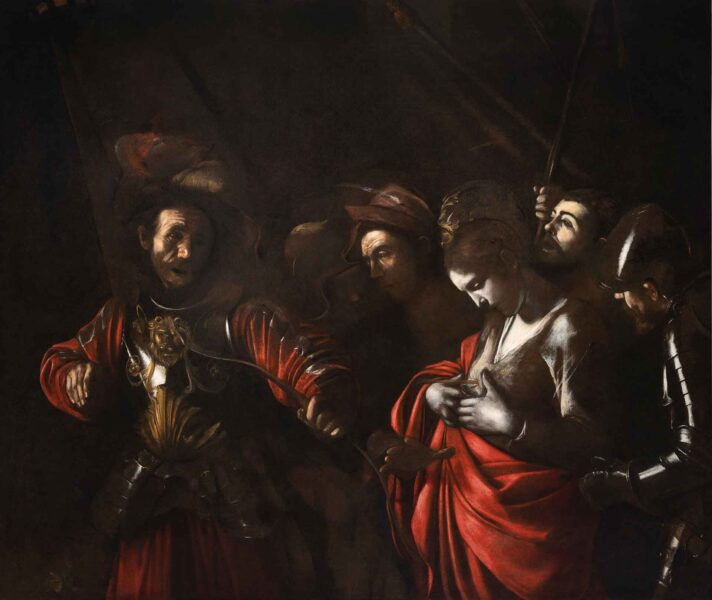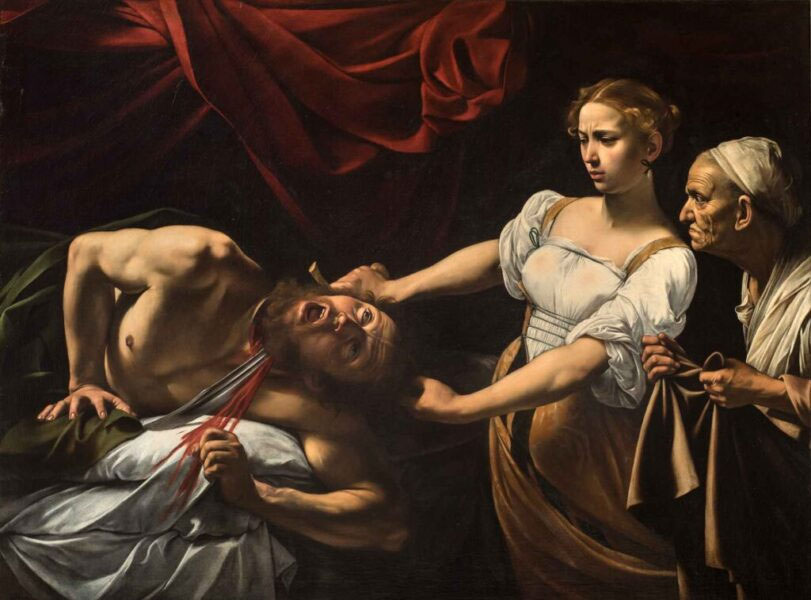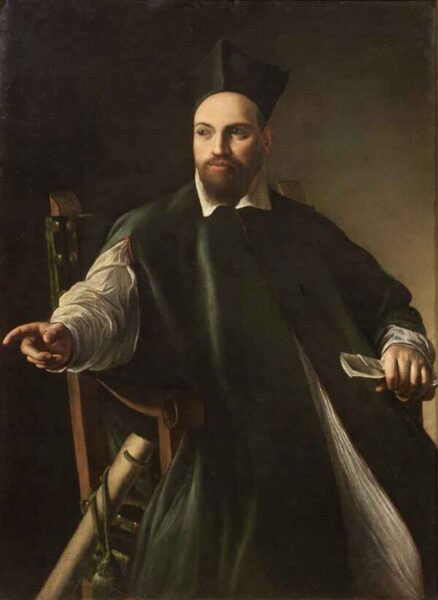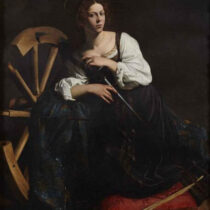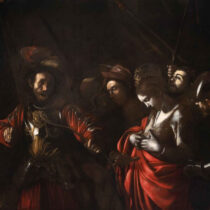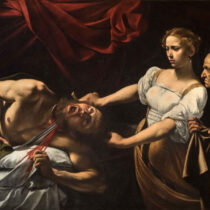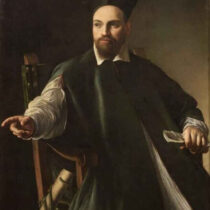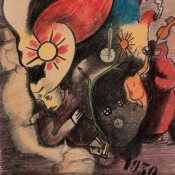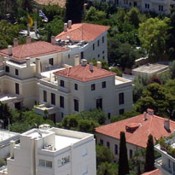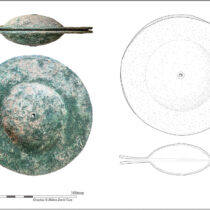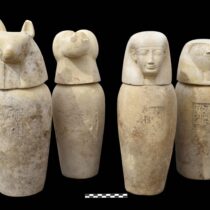“CARAVAGGIO 2025” is on view in Rome’s Palazzo Barberini since March 7. The exhibition will run through July 6, 2025.
An exceptional number of autograph paintings, extraordinary loans from the most prestigious museums in the world, two rediscovered masterpieces on display for the first time together and other works by Michelangelo Merisi, known as Caravaggio (1571–1610), as well as some new discoveries in an exhibition organized especially for the 2025 Jubilee illustrating the innovative strength Caravaggio injected into the artistic, religious and social landscape of his time.
One of the most important and ambitious exhibition projects ever showcasing Merisi’s work and, for the first time, bringing back pieces with a shared history from important national and international collections and displaying them side-by-side in a place symbolizing the connection between Caravaggio and his patrons.
Examining the context that drove Caravaggio to the forefront of world art, Palazzo Barberini will be hosting these works in a display that highlights the power and modernity of his painting, one of the greatest painting masters of all time.
By bringing together some of his most celebrated works, alongside others that are lesser known but equally as significant, this exhibition offers new, in-depth reflections on this master’s artistic and cultural revolution, exploring for the very first time and within such a broad context the innovation he injected into the artistic, religious and social landscape of the time. The works showcased include: the Portrait of Maffeo Barberini, recently put on public display over sixty years after its rediscovery and now shown alongside other paintings by Merisi for the very first time; Ecce Homo, currently displayed at the Museo Nacional del Prado in Madrid and returning to Italy for the first time in centuries; alongside other exceptional loans such as the Saint Catherine of Alexandria from the Thyssen-Bornemisza Museum in Madrid, a masterpiece once already part the Barberini collections which will be returning to Palazzo Barberini, where it was housed; and Martha and Mary Magdalene from the Detroit Institute of Arts, featuring the same model the artist used in the Judith and Holofernes preserved in Palazzo Barberini, all displayed side-by-side for the first time.
The exhibition is also an opportunity to see three paintings commissioned by the banker Ottavio Costa reunited again: Judith and Holofernes from Palazzo Barberini, Saint John the Baptist in the Wilderness from the Nelson-Atkins Museum in Kansas City and Saint Francis of Assisi in Ecstasy from the Wadsworth Atheneum of Art in Hartford, as well as other works connected to the Barberini family’s history of art collecting, such as The Cardsharps from the Kimbell Art Museum in Fort Worth, which will be returning to the Roman palazzo where it was once long conserved.
The selection of works concludes with an important loan from Intesa Sanpaolo: The Martyrdom of Saint Ursula, Merisi’s last painting done shortly before his death.
The exhibition is arranged into theme-based sections exploring the different aspects of Caravaggio’s production, revealing new discoveries and critical reflections.
Starting with the first works on the itinerary, the exhibition focuses on how Caravaggio innovated art production and the art market between the 16th and 17th centuries, up until his eruption onto the Roman art scene.
This extraordinary sequence of masterpieces also highlights the transformation and revolution of Caravaggio’s artistic language, with his unmistakable use of light that cuts through his depictions, both sacred and profane, opening up new ways of interpreting reality.
The novelty introduced by Merisi’s painting can be seen not only in his religious dramas, as in the incredible theatricality of the Capture of Christ from the National Gallery of Ireland in Dublin, it is also conveyed by the other genres Merisi tackled. In fact, for the first time, the exhibition offers the opportunity to also explore what may be considered as the birth of modern portraiture, starting with his Portrait of Maffeo Barberini, from a private collection and now shown for the first time in comparison to other paintings by this master.
“Caravaggio 2025” provides visitors with a unique opportunity to rediscover Merisi’s art in a new light, offering an experience that integrates historical discovery, critical reflection and the close comparison of his masterpieces. It is not only a tribute to his genius, it is also a reflection on his continued influence on contemporary art and our collective imagination.
The exhibition will also offer a catalog edited by Marsilio Arte, examining in-depth the themes of the exhibition through new critical studies, with essays by leading international experts exploring Caravaggio’s biographical milestones, the evolution of his style and the cultural context influencing his art, offering new interpretations and reflections on his legacy.
Marsilio Arte and Coopculture are the exhibition’s technical partners. Its media partner is Urban Vision.
Gallerie Nazionali di Arte Antica – Palazzo Barberini
Via delle Quattro Fontane 13, Rome
